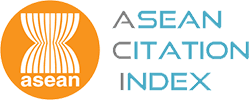Further results of fuzzy linguistic logic programming
Author affiliations
DOI:
https://doi.org/10.15625/1813-9663/30/2/2825Keywords:
Logic programming, fuzzy logic, hedge algebra, computing with words, completeness.Abstract
Fuzzy linguistic logic programming is introduced to represent and reason with linguistically-expressed human knowledge, where the truth of vague sentences is given in linguistic terms, and linguistic hedges can be used to indicate different levels of emphasis.
Fuzzy linguistic logic programming has been shown to have fundamental notions and results of a logic programming framework, especially of the declarative semantics, procedural semantics, and fixpoint semantics. The procedural semantics are sound, complete and directly manipulates linguistic terms in order to compute answers to queries.
In this paper, we prove some additional results of fuzzy linguistic logic programming, which can be considered as a counterpart of those of traditional definite logic programming. We also show that it has a generalized Pavelka-style completeness. Moreover, the possibility that aggregation operators can occur in rule bodies is also discussed.
Metrics
Downloads
Published
How to Cite
Issue
Section
License
1. We hereby assign copyright of our article (the Work) in all forms of media, whether now known or hereafter developed, to the Journal of Computer Science and Cybernetics. We understand that the Journal of Computer Science and Cybernetics will act on my/our behalf to publish, reproduce, distribute and transmit the Work.2. This assignment of copyright to the Journal of Computer Science and Cybernetics is done so on the understanding that permission from the Journal of Computer Science and Cybernetics is not required for me/us to reproduce, republish or distribute copies of the Work in whole or in part. We will ensure that all such copies carry a notice of copyright ownership and reference to the original journal publication.
3. We warrant that the Work is our results and has not been published before in its current or a substantially similar form and is not under consideration for another publication, does not contain any unlawful statements and does not infringe any existing copyright.
4. We also warrant that We have obtained the necessary permission from the copyright holder/s to reproduce in the article any materials including tables, diagrams or photographs not owned by me/us.









